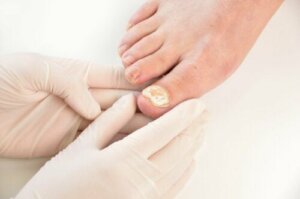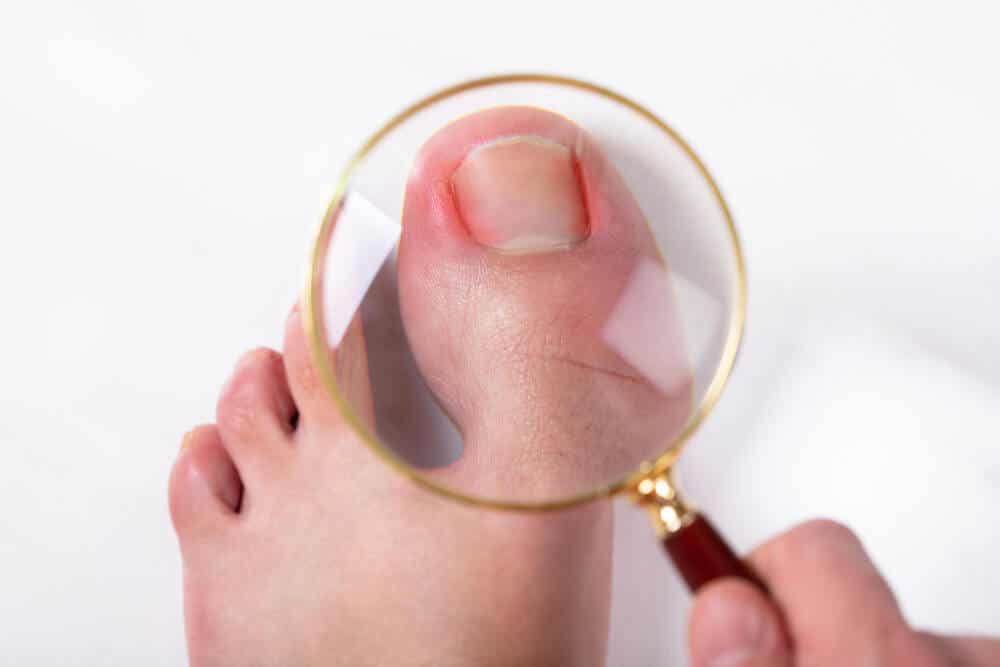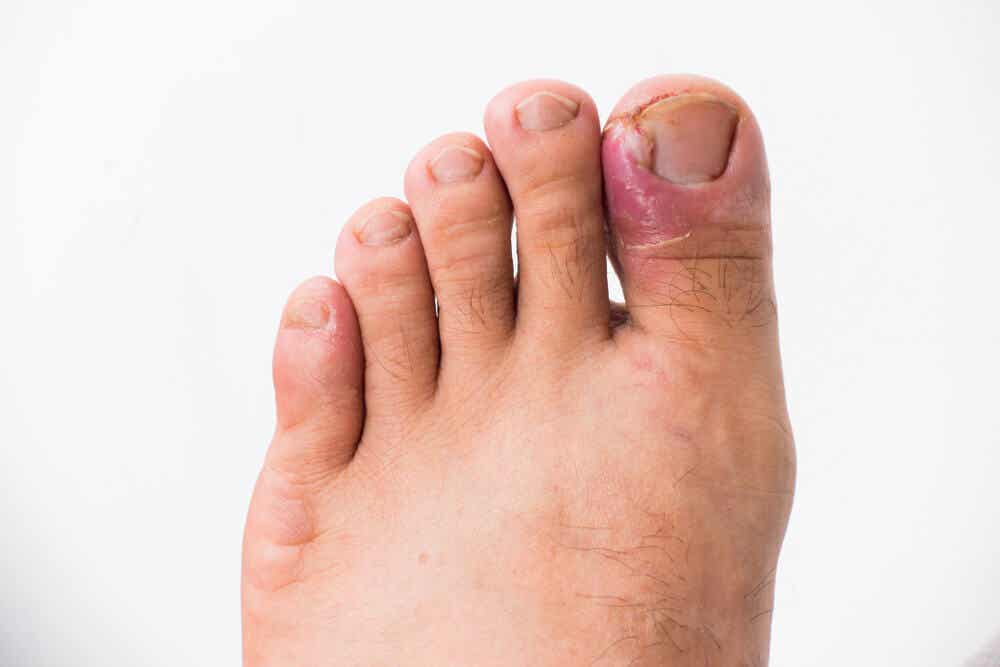7 Ways to Prevent Fungal Nail Infections

Nail fungal infections aren’t considered a serious health problem, but they are a condition that can cause a lot of discomfort. Also, once they’re contracted, it’s difficult to eradicate them. Plus, even if you’re successful, they’re still likely to return.
Nail fungal infections are also known as onychomycosis and are caused by microorganisms called dermatophytes. They feed on keratin, a protein found in nails and hair.
These microorganisms thrive in dark, warm, and moist places. That’s why the inside of shoes is a favorable place for them to settle.
It’s estimated that up to 14% of the world’s population has a fungal nail infection.
7 ways to prevent fungal nail infections

It’s always better to prevent fungal nail infections, rather than having to cure them. In the latter case, it takes a lot of time and perseverance to achieve, so the best thing to do is to prevent onychomycosis from occurring. The best way to achieve this is by adopting some simple preventive measures, such as the following.
1. Protect your feet
It’s not a good idea to walk around barefoot, especially in warm, humid areas such as swimming pools, gyms, spas, public showers, etc. Fungi can be on these surfaces and stick to the skin. It’s best to wear flip-flops or sandals.
2. Cut your nails properly to prevent nail infections
Toenails should be kept short. It’s best to use nail scissors or nail clippers, which should always be disinfected before use. The cut should be straight and, if necessary, complemented with a file to smooth the sharp edges. These tools are for personal use and shouldn’t be shared.
3. Dusting shoes
A powerful measure to prevent fungal nail infection is to dust your shoes with antifungal powder. The same should be done with socks. It’s best to do this before wearing these garments, as it prevents the growth of fungal spores.
4. Recommendations regarding footwear
Good footwear management is a definite factor in the prevention of nail fungus infection. Recommendations in this regard are as follows:
- Wear appropriate footwear. Toenails shouldn’t come into direct contact with shoes. It’s best to wear shoes that are the correct size and that have a wide area around the toes.
- Breathable material. Canvas or leather shoes allow more breathability and reduce the risk of nail fungus infection.
- Alternate shoes. It’s best not to wear the same pair of shoes two days in a row, especially if they’re damp from perspiration. It’s better to rotate several pairs.
- Antibacterial spray. It’s a good idea to spray shoes with antibacterial spray, especially if they have been worn without socks.
- Discard shoes. At the end of the treatment for a fungal nail infection, it’s best to throw away the shoes that you’ve been wearing.
Read also: 8 Tips and Tricks for Healthier and Stronger Nails
5. Foot hygiene is key to preventing nail infections
It’s a good idea to wash your feet every day with soap and water and then to dry them very well with a towel. This applies to the area between the toes as well.
On the other hand, applying antifungal powders helps to reduce moisture in the area. Socks should also be washed daily and changed whenever they’re wet.
6. Clean your nails well
When washing your hands and feet, don’t forget to clean your nails. It’s advisable to rub them with soap to avoid the possibility of infection. Using a nail brush may be a good idea, as many fungi settle under the nails. If you touch an infected nail, you always need to wash your hands.
7. Bear in mind some other recommendations
If the skin on your feet is cracked due to dryness, it’s important to moisturize it. Fungi can enter and settle in thanks to these grooves. Lesions around the nails should also be treated quickly, as they’re a gateway for microorganisms.
It’s not advisable to use nail polish or artificial nails if you have a fungal nail infection. In fact, it would be best never to use these items, as they encourage the growth of microorganisms. It’s important to make sure that your beauty salon observes appropriate hygiene measures if you’re getting a manicure or pedicure.
Don’t miss: Caring For Your Hands and Feet
How to identify an infected nail
Signs of fungal nail infection are as follows:
- Changes in the color of the nail. A white spot or a brown or yellow streak is a sign of fungus. Sometimes they appear dark in color because of the buildup of debris under the nail.
- Textural changes. Nails that are thickened, brittle, flaky, or have an uneven surface indicate fungus.
- Changes in shape. An abnormal shape may indicate a fungal nail infection.
- Pain or swelling around the nail.
- An itching sensation in the area.
- Bad odor coming from the nails
Risk factors for nail infections

Older people are more at risk of developing a fungal nail infection. This is because nail growth is slower at older ages, blood circulation is reduced, and there’s more history of fungal exposure.
People who have diabetes, as well as those with a weakened immune system, are also more prone to nail fungus. People with “athlete’s foot” often transfer fungus from the skin to their nails.
There’s also an increased risk in people who have a condition that causes skin lesions, such as psoriasis. Long-term antibiotic use also increases the risk, as does excess weight, excessive sweating, incontinence, and pregnancy.
Prevention is the best medicine for nail infections
Fungal nail infections are difficult to treat. Usually, home remedies are used first to get rid of them.
However, if these are unsuccessful, it’s best to consult a doctor. More specialized treatment may be required.
There are times when antifungal medications are necessary to eradicate the infection. In the most severe cases, it may be necessary to remove the nail completely through surgery to solve the problem.
All cited sources were thoroughly reviewed by our team to ensure their quality, reliability, currency, and validity. The bibliography of this article was considered reliable and of academic or scientific accuracy.
- Yugcha Chicaiza, E. G. (2018). Programa educativo sobre factores de riesgo de pie diabético por el uso inadecuado de calzado entre los pacientes del club de diabéticos del centro de salud Morete Puyo (Bachelor’s thesis).
- Vialat Soto, V., Merayo, V., León Alonso, D., & López Díaz, V. D. L. C. (2014). Sudor compensador, un efecto no deseado secundario al tratamiento quirúrgico de la hiperhidrosis primaria infantil. Revista Cubana de Pediatría, 86(2), 207-214.
- Chanussot, C., & Arenas, R. (2007). Infección micótica plantar e interdigital en pacientes con onicomicosis. Revista iberoamericana de micología, 24(2), 118-121.
This text is provided for informational purposes only and does not replace consultation with a professional. If in doubt, consult your specialist.








